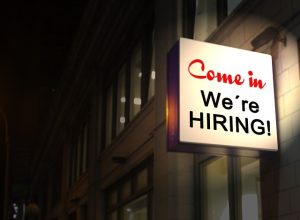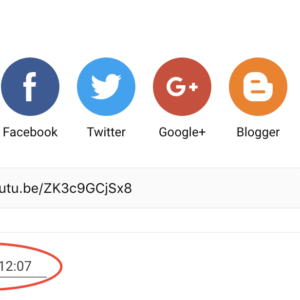
Creating a design-centric program
In the first part of our series, we looked at the evolution of design thinking as a new approach to optimizing business cultures — a streamlined method for simplifying and humanizing the integration of people, processes and technology. For MSPs overseeing increasingly complex and involved contingent talent solutions, the approach can help bring order to chaos. Since we’ve already covered the fundamentals of the theory, let’s explore how it can be put into practice.
Focus on the “user” experience
In a design-centric program model, the value proposition doesn’t just focus on utility, it incorporates the emotional value that stakeholders stand to gain. In terms of utility, MSPs deliver cost savings, visibility into performance and spend, risk reduction, enhanced cycle times, forecasting and more. However, there’s also an emotional component. Use of an MSP alleviates the burden of managing large teams of staffing suppliers and their talent. Process optimization allows time-strapped hiring managers to concentrate on their core tasks of growing the business, running their departments and strategizing on competitive innovations to continue driving profits and progress. An MSP provides hiring managers and client leaders with peace of mind.
The initial phases of discovery are perfect opportunities to engage and observe all client stakeholders to gauge their behaviors and draw conclusions about what they want and need. These observations translate to robust quality service delivery programs, which make evident to hiring managers how the MSP/VMS meets or surpasses expectations and contractual commitments. SLAs are created, tracked and managed. Customized scorecards are developed, monitorFed and reported on. Compliance audits recur at defined intervals to promote visibility and collaboration. And stakeholder satisfaction is frequently polled and reviewed through continuous communication and formal reviews.
During onboarding, MSPs and their staffing partners can capitalize on understanding and satisfying the needs of the talent, using the same empathetic approach. Today’s talent expect socialization. It’s no longer a luxury for recruitment professionals, it’s a must. Talk to prospective candidates — both active and passive — to identify talent who will be suitable for current and future positions with the client.
Engage candidates and compel them to discuss their backgrounds, skills, qualifications, accomplishments, work experiences and career goals first.
MSPs and staffing professionals possess the tools, the acumen, the experience and the people skills to fit top talent to highly engaging assignments. Leading with empathy, they can serve as advocates, mentors, facilitators and negotiators. This gives talent a voice and a ready ear:
- Take a genuine interest in the personal and professional aspirations of their people, and steer them toward paths that lead to attaining those goals.
- Recognize the efforts, contributions and achievements of their talent.
- Schedule time to meet with talent and talk.
- Have meaningful interactions — ask workers open-ended questions about their projects, their challenges, their ideas and recommendations, and actively listen to their responses.
Prototyping
“Design thinking, first used to make physical objects, is increasingly being applied to complex, intangible issues, such as how a customer experiences a service,” writes Jon Kolko in his examination of design thinking for Harvard Business Review. MSPs don’t need to construct physical models to represent forward-thinking solutions. Partner with hiring managers to gain a comprehensive understanding of the desired positions and skills for the program: how they relate to the work, how they fit the client’s culture, how they can shape sourcing initiatives and how they will encourage the right candidates to apply. The datasets MSPs collect in the VMS software provide a treasure trove of information and analytics that can be used to forecast demands, usage and financial considerations for near-term and long-term planning.
During the discovery and data gathering phases of implementation, vital information is imparted that can be used to create documents to serve as design artifacts. Strive to create living documentation capable of changing alongside program growth and newly revealed needs. Use formal business reviews as a means for additional discovery, and record those insights in the documents. Consider starting off with a project charter that clearly defines the program structure, scope, deliverables, responsibilities and how work will be completed, implemented and approved. Develop a comprehensive change management plan, with the inclusion of communication plans for staffing supplier partners and contingent talent. From the perspective of utility, we can:
- Establish a governance structure for program implementation.
- Carefully define roles, schedule business reviews, create issue identification and resolution processes, and involve key stakeholders in planning sessions.
- Use automated tools and online platforms to encourage collaboration.
- Define critical milestones and the metrics for measuring progress.
- Rely on past lessons learned to anticipate roadblocks and easily overcome them.
- Customize the transition for the client’s specific needs, objectives, program requirements and culture.
From the design perspective, however, we can begin to conceptualize future structures and solutions. By going the extra mile, we can develop and experiment with prototypes to meet upcoming demands.
- Carefully follow employment, market and industry trends — both for the staffing market and the client’s sector.
- Don’t just discuss immediate program needs with clients, really delve into their pain points. Gain an understanding of where they are and where they want to be long term.
Use this information to create a “client’s journey.” By doing so, you can reach beyond the development of continuous improvement plans to anticipate and recommend new contingent talent solutions such as freelance management platforms, Statement of Work (SOW) contracting, new recruiting models (Crowdstaffing, online recruiting, social recruiting), independent contractor compliance and more. If you get the hiring manager’s buy in, perhaps suggest a “sandbox” type environment to begin experimenting with these new models outside the primary function to test for feasibility and refine the methodology.
Tolerating failure
As Kolko points out, “A design culture is nurturing. It doesn’t encourage failure, but the iterative nature of the design process recognizes that it’s rare to get things right the first time.” Planning efforts prevent hiring managers from undertaking a snipe hunt — squandering precious time and resources to track down an elusive creature that probably doesn’t exist. Every organization wants to find Mr. or Mrs. Perfect, however savvy MSPs and their staffing curators focus on finding Mr. or Mrs. Right — successful and winning performers who, while they might not satisfy all criteria on a wish list, can be trained to excel in new areas.
When we talk about tolerating failure, we’re really discussing the construction of a talent culture that’s open, supportive, receptive to feedback and welcomes new ideas without rebuke. A design-centric program encourages fresh perspectives, thoughts for innovation, the pursuit of new discoveries and feedback. It’s a place where, as Kolko notes, stakeholders “can take social risks — putting forth half-baked ideas, for instance — without losing face or experiencing punitive repercussions.” To ensure the success of fault tolerant program, MSPs can:
- Solicit input from their supplier partners and hiring managers, offering transparent communications about objectives, opportunities and challenges.
- Remain close to staffing curators and client advocates, creating opportunities to keep them engaged and informed, and provide guidance when necessary.
- Hold regular performance meetings to recognize achievements, course correct identified weaknesses, gain new insights for optimizing the program, and more.
Design thinking simplifies a complex world
Design thinking is an essential tool for simplifying and humanizing the heightened levels of complexity affecting all modern workforces. Industry juggernauts such as IBM and GE are already realizing the benefits of this approach, however organizations of any size can seize the advantages. People processes are no longer clear-cut matters of recruitment and placement. We now have multiple automation technologies to use, evolving categories of talent to manage, pioneering sourcing and fulfillment models, the undeniable reality of a permanent blended workforce, and new business pressures to confront.
“And every established company that chooses to compete on innovation rather than efficiency must be able to define problems artfully and experiment its way to solutions,” Kolko explains. An organizational shift to design thinking imparts unique opportunities to humanize technology and develop “emotionally resonant” workforce solutions for this new century.
“Adopting this perspective isn’t easy,” Kolko concludes, “but doing so helps create a workplace where people want to be, one that responds quickly to changing business dynamics and empowers individual contributors. And because design is empathetic, it implicitly drives a more thoughtful, human approach to business.”
Business & Finance Articles on Business 2 Community
(293)







